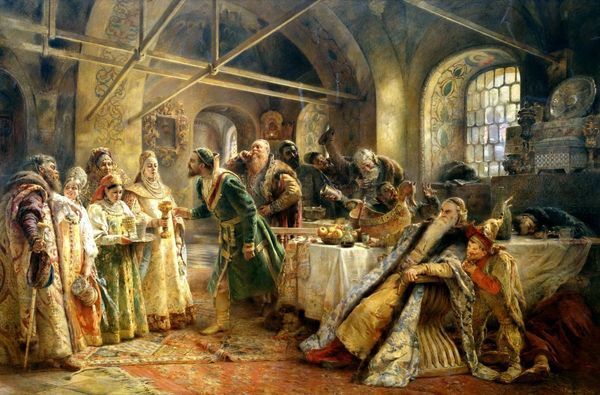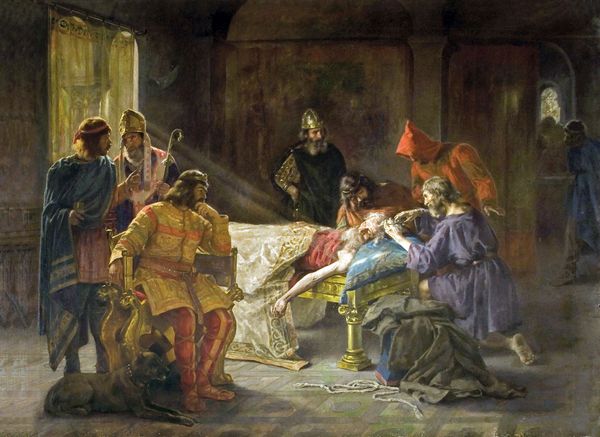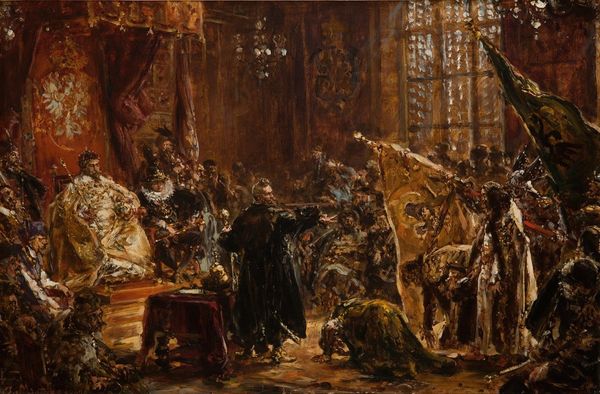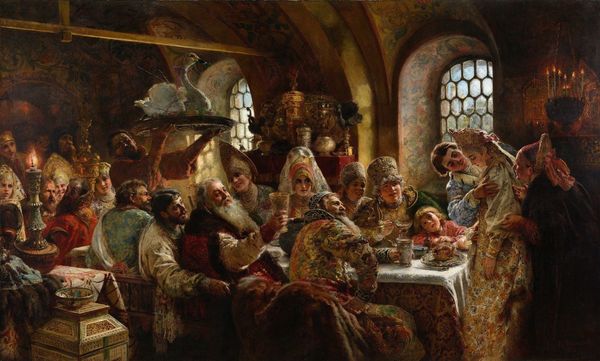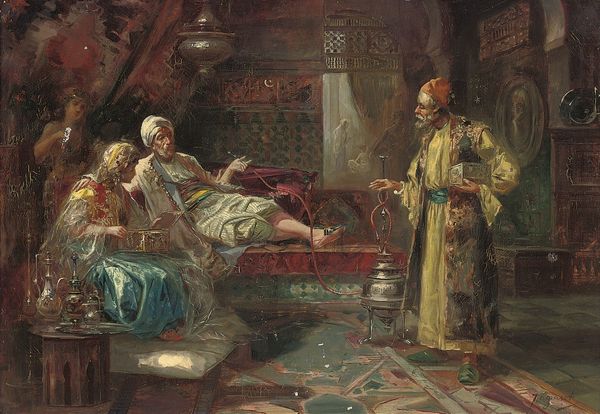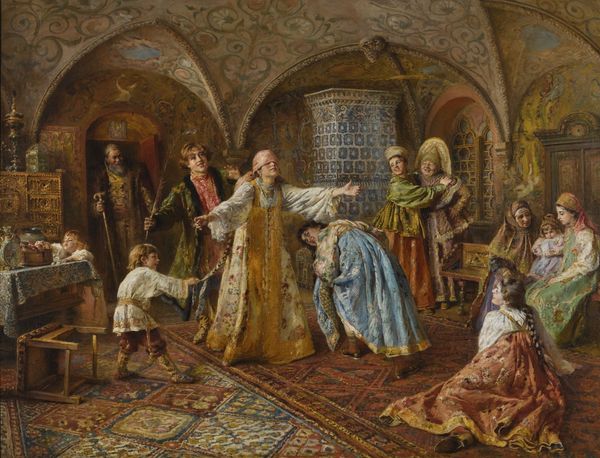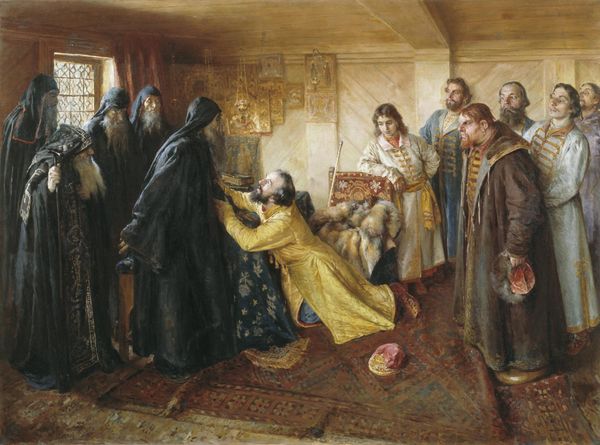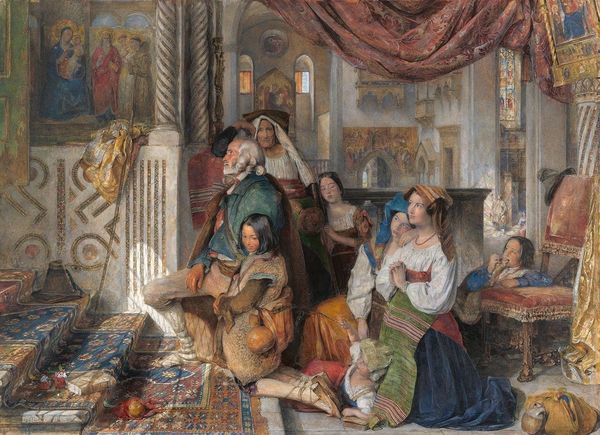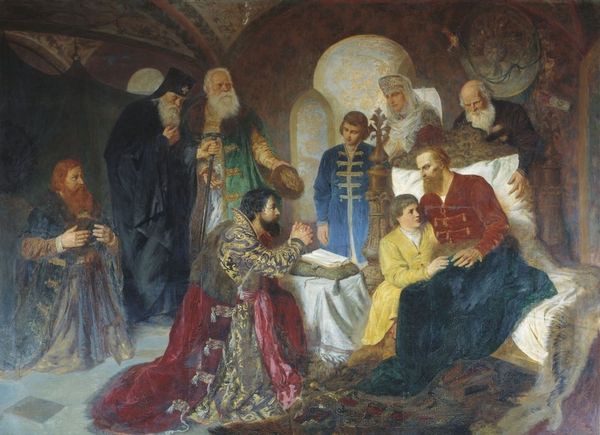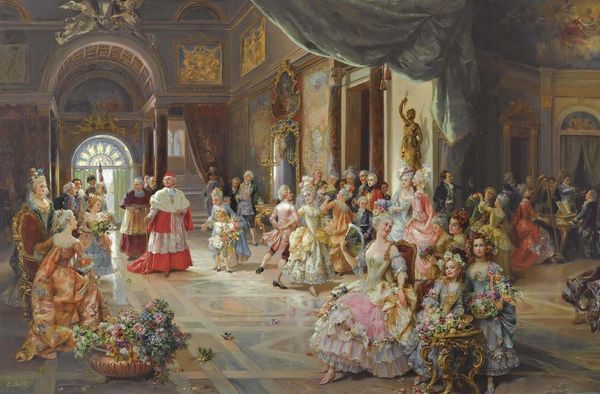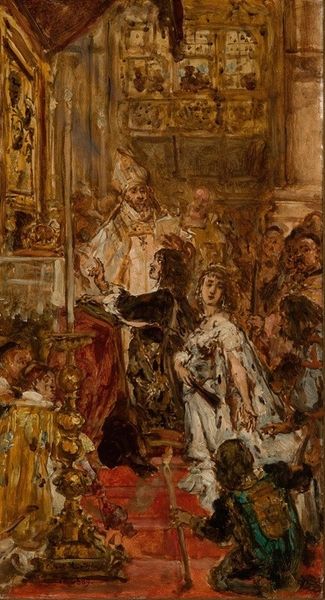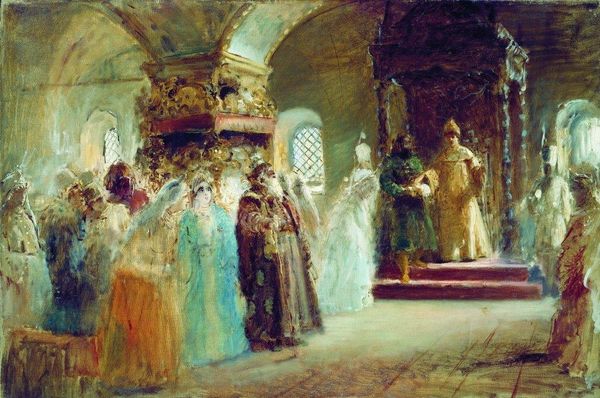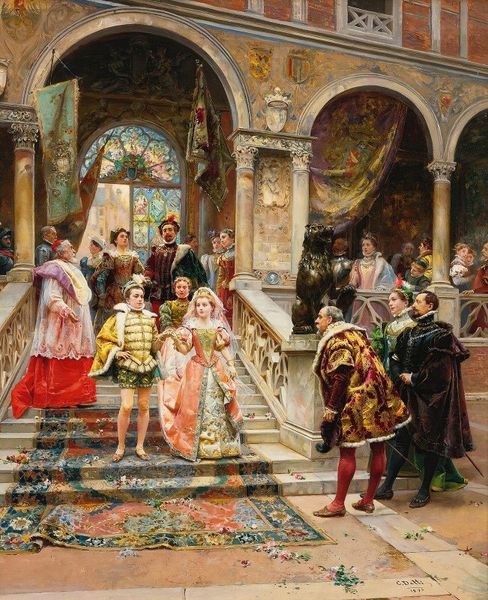
Copyright: Public domain
Editor: Konstantin Makovsky’s “Before the Wedding,” painted in 1890, presents such a vibrant scene of what looks like a Russian aristocratic family. There's a quiet tension in the air. It's a painting of anticipation, maybe even a bit of anxiety. What jumps out at you when you look at this, particularly in terms of how it reflects cultural memory? Curator: I see echoes of rituals that run deep, rituals encoded in gestures, costumes, and even the objects scattered throughout the room. The bride's lowered gaze is a potent symbol – not just of modesty, as one might initially assume, but also perhaps a submission to tradition, a surrendering of personal will to communal expectations. Look at the elaborate headdresses; they aren't just fashion, are they? Editor: They seem to be broadcasting status, definitely. Layers of wealth and identity. But status for whom? The individual, or the family? Curator: Precisely. The adornment serves the individual *through* service to the family's legacy. These are visual cues intended to solidify lineage and cultural continuity. Even the arrangement of figures seems deliberate: the elders presiding, the younger women attending, all framing the central figure of the bride. Doesn't that suggest a carefully constructed narrative? Editor: Yes, almost like a stage setting. Each element feels so carefully placed to convey meaning. Are there hidden symbols here that a contemporary viewer might miss? Curator: Without a doubt. The jewelry box, the specific embroidery on the garments – these would have spoken volumes to a 19th-century Russian audience. They represented familial wealth, the dowry, and blessings for a fruitful marriage, connecting present hopes with generations past. It invites us to consider how objects become imbued with cultural weight over time, wouldn't you agree? Editor: Absolutely. I hadn't considered the dowry as a symbol itself, laden with that much historical context. This has definitely given me a new perspective on how to read paintings for their embedded cultural meanings.
Comments
No comments
Be the first to comment and join the conversation on the ultimate creative platform.
